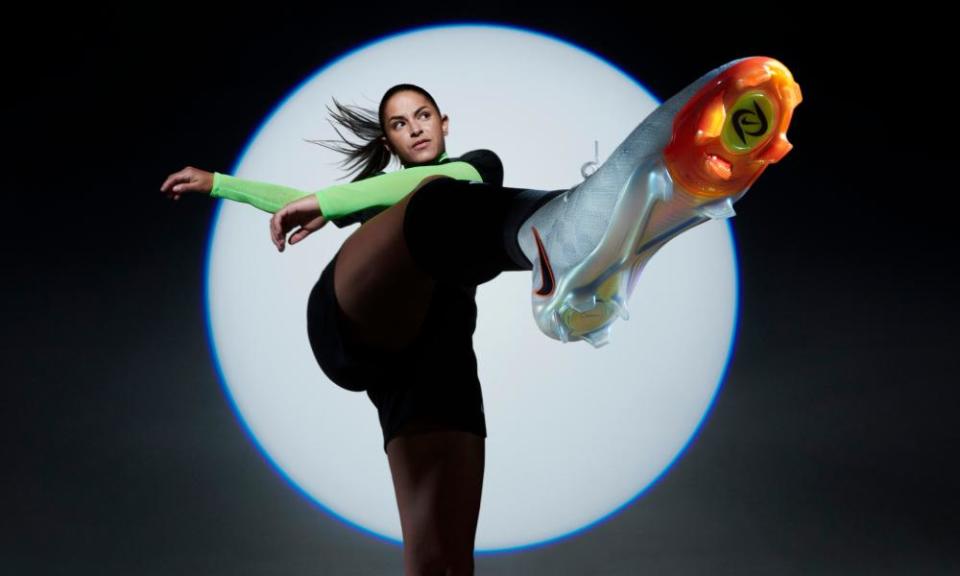New women’s football boots – a big step forward or a marketing ploy?

With just five weeks to go before the Women’s World Cup kicks off, Nike has launched its new Phantom Luna boot, described as the “most innovative and researched women’s-led boot” in the company’s history. Its release has garnered the spotlight with conversation returning to the importance of having equipment for women designed around them and whether major corporations are doing enough.
Until relatively recently, this seemingly common-sense concept has largely been ignored by manufacturers. Women’s bodies are built differently but female athletes at all levels have been expected to perform in kit built for men. This has, at best, caused mild discomfort and, at worse, increased susceptibility to injury.
The need for something specific for women has never been more prevalent. At one point this season, 25% of the 2022 Ballon d’Or nominees were sidelined with anterior cruciate ligament (ACL) injuries, which are so serious they can take away at least 10 months of a player’s career. Marie-Antoinette Katoto, Beth Mead, Vivianne Miedema were among the high-profile players who were struck by the curse. Research released by Dr Katrine Okholm Kryger of St Mary’s University, Twickenham, last year revealed how the use of unsuitable football kit could increase instances of injury. In terms of a boot, a woman’s foot differs in shape and size to men’s, while a lighter bodyweight affects the length of studs required.
In the past, boots have tended to be marketed towards women without being truly designed for them. One of the first companies to tackle this was Ida Sports. Its co-founder Laura Youngson had experienced pain while wearing children’s boots in order to play, and came up with the idea in the process of helping to break a Guinness World Record: playing a match with Equal Playing Field on Kilimanjaro in 2017 – the game played at the altitude – and realising other women were in the same boat. Ida decided to fill the gap, testing its prototype and releasing its first boot in 2020.
“I think what really struck me was the running shoes experience,” Youngson says. “You go into a sports store and there are loads of running shoes for women. I was like: ‘Why isn’t it happening for football?’ For me, the driving factor is: can we reduce pain for our customers?
“It’s even more important looking at this group of girls coming up. Not only from the functional aspect of girls going through puberty and having stuff that’s made for them … I think it’s also about the emotional experience. Can I walk into a sports store and see myself there?”
More brands have followed, albeit slightly tentatively. In July 2021, Puma produced its first women’s fit boot as part of the Ultra range, with the latest edition launched in April. A women’s fit is now also available as part of its Future and King ranges.
Last week came Nike’s Phantom Luna, a boot two years in the making and according to the manufacturer “backed by Nike’s most meaningful investment in women yet” and “with [the female athlete] at the centre of the process”.
Nike says it is made up of “three key elements: traction, fit and feel – all of which were designed with female-specific feedback, needs and anatomy in mind”. The boot features a tighter fit around the ankle and contains a new circular stud pattern near the toes to help with traction and mobility and is supposed to have to “bigger touch zones” because of the smaller size of women’s feet.
The Phantom Luna is offered to both male and female players and this is a sticking point: it is not exclusively a women’s boot. More needs to be done to truly understand the science and the European Club Association has announced just that – a “groundbreaking” study commissioned to highlight the benefits of well-designed footwear.
Around 350 players have taken part to date, with 3D imagery captured of their feet. Their goal is for the results – to be revealed at their summit towards the end of this month – to “act as a global reference point for brands and consumers”.
This progress is welcomed by Youngson. “I want to keep pushing the bigger brands to really develop this and invest in women … [they] are accepting it and that’s cool because then it’s just about making awesome shoes and building a brand that resonates with women and finding that space. Women are never going to be an afterthought for us whereas I feel like that’s how I felt and why I set Ida up.”
Have a question for our writers – or want to suggest a topic to cover? Get in touch by emailing moving.goalposts@theguardian.com or posting BTL.
To subscribe to the full edition of our free weekly women’s football email, Moving the Goalposts, just visit this page and follow the instructions.

